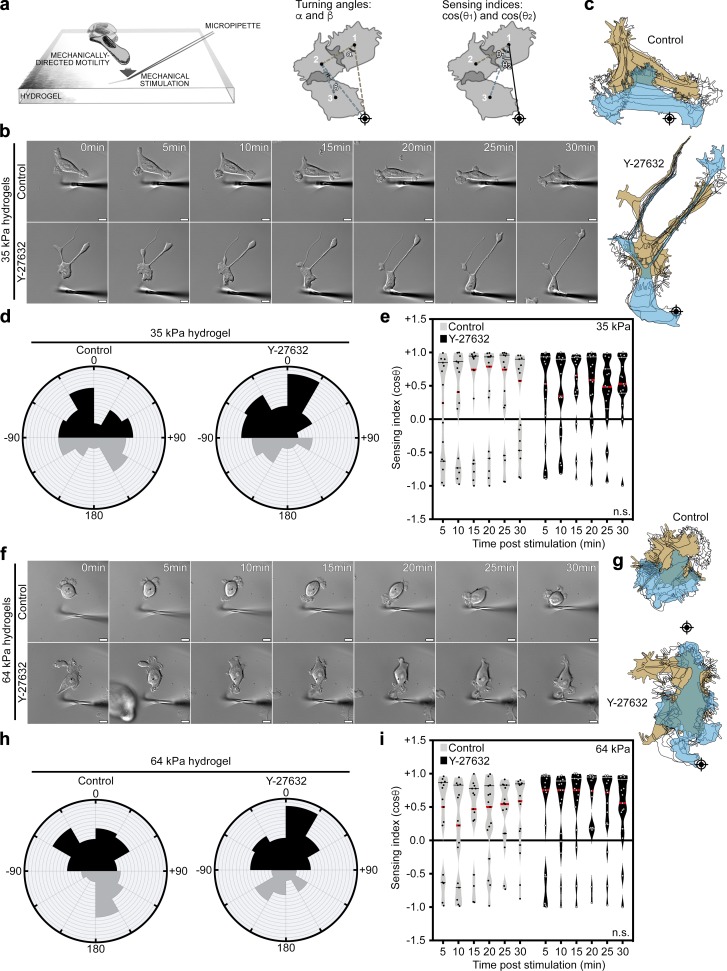Figure 1.
Mechanically directed motility occurs under myosin suppression. (a) Illustration depicting mechanically directed motility assays and sensing index and turning angle analyses. Crosshairs denote micropipette positions. (b–e) Control (no drug) and Y-27632 (25 µM)–treated MCF7 cells, plated on 35-kPa hydrogels, were mechanically stimulated. (b) Still images from representative time-lapse videos of control and Y-27632-treated cells (Video 1). Scale bars are 10 µm. (c) Corresponding cell traces at 0, 5, 10, 15, 20, 25, and 30 min, with starting positions in tan and final positions in blue. Crosshairs denote micropipette positions. (d) Rose plots show cumulative turning angles for control and Y-27632–treated cells. Black sectors denote turns in the direction of the mechanical stimulus, and gray sectors denote turns away from the mechanical stimulus. Data are collected from five independent experiments (n = 15 per condition). (e) Sensing indices of control and Y-27632–treated cells over time. Two-way ANOVA shows no significant difference in sensing index (P = 0.1170). Data are collected from five independent experiments; all data points are shown (n = 15 per condition; violin plot shows median and quartiles of sensing indices). (f–i) Control (no drug) and Y-27632 (25 µM)–treated MCF7 cells, plated on 64-kPa hydrogels, were mechanically stimulated. (f) Still images from representative time-lapse videos of control and Y-27632–treated cells (Video 1). Scale bars are 10 µm. (g) Corresponding cell traces at 0, 5, 10, 15, 20, 25, and 30 min, with starting positions in tan and final positions in blue. Crosshairs denote micropipette positions. (h) Rose plots show cumulative turning angles for control and Y-27632–treated cells. Black sectors denote turns in the direction of the mechanical stimulus, and gray sectors denote turns away from the mechanical stimulus. Data are collected from six independent experiments (n = 15 per condition). (i) Sensing indices of control and Y-27632–treated cells over time. Two-way ANOVA shows no significant difference in sensing index (P = 0.0917). Data are collected from six independent experiments; all data points are shown (n = 15 per condition; violin plot shows median and quartiles of sensing indices).

